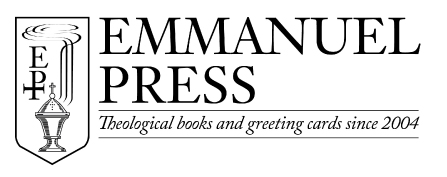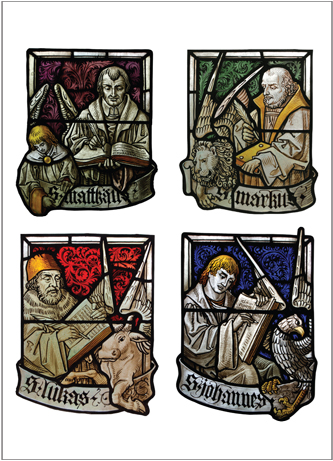THE LATEST NEWS
An Explanation of the Common Service: The Kyrie
Why do we do what we do, sing what we sing, and pray what we pray in the Common Service (LSB Setting 3, TLH p. 15)? In the next few weeks, we will be posting several excerpts from An Explanation of the Common Service in order to “provide a basic yet important description of the theological and biblical meaning of this time-tested liturgy” (back cover).
_________
The Kyrie
Lord, have mercy upon us.
Christ, have mercy upon us.
Lord, have mercy upon us.
What is the meaning of the word Kyrie? It is a Greek word and means “O Lord.”
What is the office of the Kyrie? The congregation, realizing its infirmity from indwelling sin, calls upon God for that grace which has been announced and offered in the Introit.
Why is the prayer thrice uttered? Because the grace for which it asks is from God the Father, through the Son, by the Holy Spirit.
_________
An Explanation of the Common Service, pages 27-28. (on sale through August 20)
Seed Grains of Prayer: Prayer Before Daily Bible Reading
“Lord Jesus Christ, Who hast commanded to search the Scriptures and promised that in them we have the impulse of faith, and life everlasting; Who alone art worthy to open and break the sevenfold seals of this Book; open now mine eyes to behold the wonders of Thy law. Show me the paths of righteousness, that I continue therein unto the end. From heaven above, pour out Thy Holy Spirit upon me, and from Thy throne of glory send Him to be with me; to work in me that I learn to know what is well pleasing to Thee; to do all my labor in Thy name, unto Thy glory; and to fill my heart with true faith, love, hope, humility, long-suffering, fear, and blessedness in the Lord. Amen.”
Wilhelm Loehe, Seed Grains of Prayer, #16 (on sale through August 20)
August Sale: 20% off All Books
From now through Monday, August 20, all of our books (plus The Brotherhood Prayer Book Audio CD) are 20% off the retail price.
The Brotherhood Prayer Book: Hymn for Pentecost (with Audio)
Audio: Listen to Hymn for Pentecost chanted.
Come, Holy Ghost, Creator blest,
Vouchsafe within our souls to rest;
Come with Thy grace and heavenly aid
And fill the hearts which Thou hast made.
To Thee, the Comforter we cry,
To Thee, the Gift of God Most High,
The Fount of life, the Fire of love,
The soul’s Anointing from above.
The sevenfold gifts of grace are Thine,
O Finger of the Hand Divine;
True Promise of the Father Thou,
Who dost the tongue with speech endow.
Thy light to every thought impart
And shed Thy love in every heart;
The weakness of our mortal state
With deathless might invigorate.
Drive far away our wily Foe
And Thine abiding peace bestow;
If Thou be our protecting Guide,
No evil can our steps betide.
Make Thou to us the Father known,
Teach us the eternal Son to own
And Thee, whose name we ever bless,
Of both the Spirit, to confess.
Praise we the Father and the Son
And Holy Spirit, with them One;
And may the Son on us bestow
The gifts that from the Spirit flow.
Amen.
__________
Veni, creator Spiritus, mentes. Rhabanus Maurus, d. 856, trans. by E. Caswall.
**An excerpt from The Brotherhood Prayer Book
Now Available: The Four Evangelists Greeting Card
The Four Evangelists, our newest greeting card, is now available! As stated on the back of the card:
These stained glass images come from a village church in Zwingenberg, Germany. Christian tradition has historically associated the authors of the four Gospels with the four “living creatures” that surround God’s throne, as described in Revelation 4:7 – Matthew (S. Matthäus) with a man, Mark (S. Markus) with a lion, Luke (S. Lukas) with an ox, and John (S. Johannes) with an eagle. The four evangelists are traditionally represented in paintings, carvings, or stained glass near or on the pulpit to show that the Word preached by the pastor is a proclamation of Jesus’ own words as recorded in the Gospels.
While this blank card is appropriate for any type of correspondence, it is especially suitable for ordinations, installations, or an anniversary of these, whether it be given to a pastor or used as an invitation to one of these occasions.
As a reminder, please visit the Ordering Information tab for details about bulk orders, shipping, and international orders.

Let’s stay in touch! To receive the most current information on our products and new releases, join our email list today!



